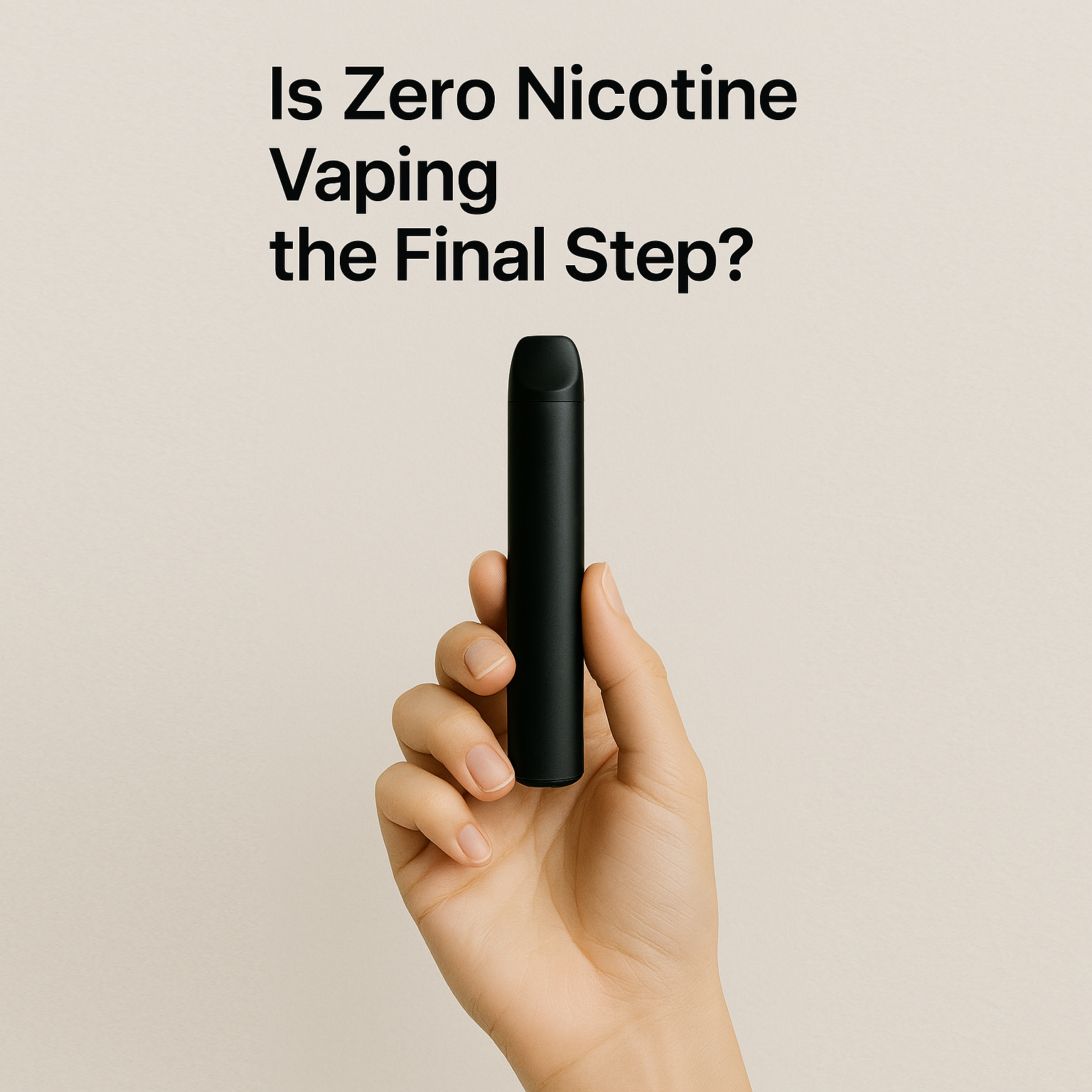For many people, quitting smoking is a journey that passes through several phases — cigarettes, then vaping with nicotine, then eventually zero nicotine vaping. But what happens next? Is zero-nicotine vaping the final step, or just another stage in the process? Let’s break down what zero-nic vaping really means and whether it’s where your journey should end.
1. What Zero Nicotine Vaping Actually Is
Zero-nicotine e-liquids contain the same base ingredients — vegetable glycerin (VG), propylene glycol (PG), and flavorings — just without the nicotine. You still get vapor, flavor, and the physical hand-to-mouth motion, but none of the chemical dependence that comes from nicotine itself.
It’s the closest you can get to smoking without actually smoking — and without addiction holding the leash.
2. Why It Works as a Transition Phase
Vaping without nicotine is an effective bridge for people who’ve already tapered down their nicotine levels. It helps your brain and body detach from the chemical while keeping the familiar rituals that make quitting psychologically easier.
- Physical comfort: You still have the habit and flavor you’re used to.
- No withdrawal: Nicotine cravings disappear over time.
- Behavioral bridge: Keeps your hands and mouth busy while your brain adjusts to being fully nicotine-free.
It’s not about replacing nicotine; it’s about maintaining control while letting go at your own pace.
3. The Hidden Trap — Staying Stuck
The danger of zero-nicotine vaping is comfort. It’s easy to say, “Well, at least I’m not smoking,” and keep vaping for months or years without moving forward. The truth? If you’re still vaping out of habit, you haven’t fully quit yet — you’ve just traded one ritual for another.
Tip: Set a personal deadline. Decide how long you’ll stay at zero-nicotine — a few weeks or months — then plan your next move: fewer sessions, smaller puffs, or no vape at all.
4. Benefits of Going Nicotine-Free
Even though vaping is much safer than smoking, removing nicotine takes your health benefits to the next level. Nicotine affects your heart rate, blood pressure, and sleep — and cutting it out gives your body space to fully heal.
- Improved focus and calm — no more chemical highs or crashes.
- Better sleep and less restlessness.
- Freedom from dependence — you don’t “need” anything to feel normal.
- More consistent moods and less anxiety.
5. When to Stop Vaping Entirely
Once you’ve been on zero-nicotine liquid for a while, cravings should be gone completely. At that point, vaping becomes just a habit — not a need. That’s when it’s time to think about quitting the vape too.
Try these small steps:
- Leave your vape behind during errands or walks.
- Skip certain times of day, like morning or before bed.
- Replace vaping moments with new habits — tea, deep breaths, or music.
The less you depend on it, the more natural life without vaping feels.
6. The Real Final Step — Total Freedom
Zero-nicotine vaping isn’t failure; it’s progress. But the ultimate goal is freedom — to wake up, breathe, and feel calm without needing to inhale anything. When you reach that point, you’re not managing addiction anymore — you’ve outgrown it.
Remember: The final step isn’t about stopping a behavior. It’s about rediscovering what it feels like to be completely free — no cravings, no devices, no dependence.
Final Thoughts
Zero-nicotine vaping can absolutely be your final step — as long as you treat it like a bridge, not a destination. Celebrate how far you’ve come, but don’t stop halfway. Use it to ease your mind and body into the next chapter: living nicotine-free, smoke-free, and fully in control.
The goal isn’t to vape forever — it’s to prove you don’t need to anymore.







Please log in to leave a comment.